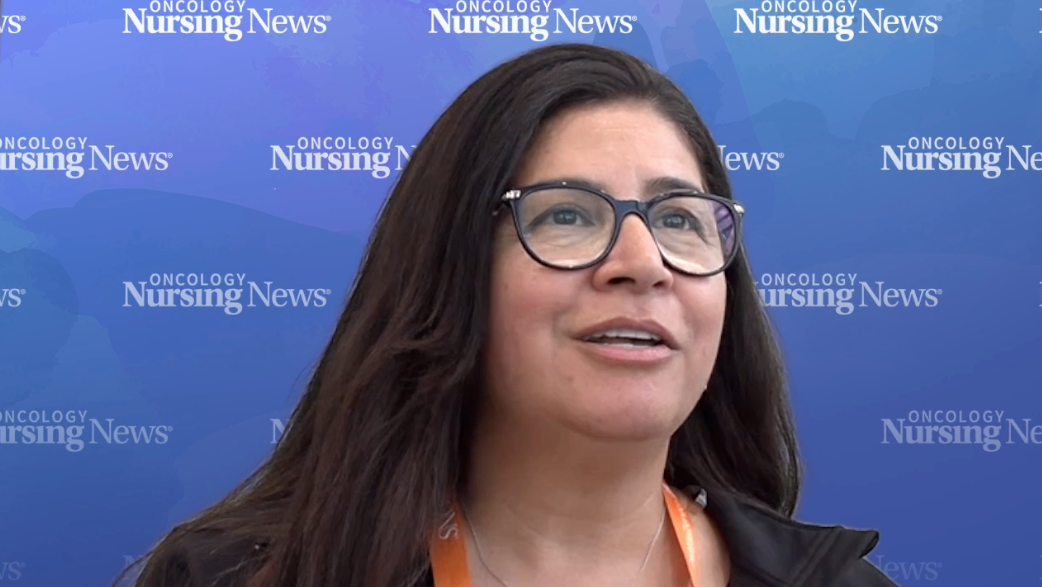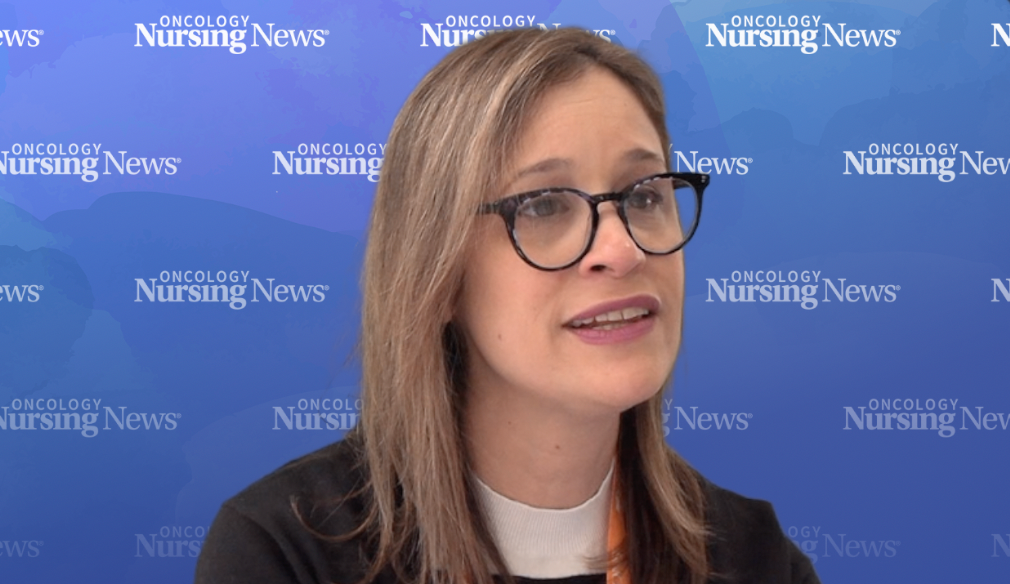Cilta-cel Demonstrates 99.4% ORR in Lenalidomide-Refractory Myeloma
Patients in the CARTITUDE-4 trial experienced a high response rate to the treatment as early as their first relapse.
Cilta-cel Demonstrates 99.4% ORR in Lenalidomide-Refractory Myeloma

Patients with lenalidomide (Revlimid)-refractory multiple myeloma treated with ciltacabtagene autoleucel (cilta-cel; Carvykti), including those with a first relapse, experienced a 99.4% objective response rate (ORR), along with an 86.4% complete response (CR) rate/stringent CR rate, according to results of the CARTITUDE-4 trial (NCT04181827) that were presented at the 2024 Oncology Nursing Society (ONS) Congress.1
At a median follow-up of 16.0 months (range, 3.8-27.3), findings showed that the responses deepened over time, with the median duration of response and median progression-free survival (PFS) not reached in the as-treated population with cilta-cel. Additionally, patients who were minimal residual disease (MRD)–evaluable (n = 144) with an MRD-negative CR or higher showed improved PFS from infusion vs those who were MRD positive and/or had lower than a CR (P = .0196).
“These results highlight efficacy and safety outcomes in patients who receive cilta-cel, which may help to optimize patient care,” lead study author Ishmael Applewhite, BSN, RN-BC, OCN, of the University of Rochester Medical Center, said in a poster presentation of the data. “While they wait, they have bridging therapy that has been shown to effectively control disease burden in the as-treated population and may improve treatment outcomes by enabling more patients to receive cilta-cel as treatment for their lenalidomide-refractory multiple myeloma.”
Cilta-cel is a dual-binding BCMA-directed CAR T-cell therapy that is indicated in the United States for the treatment of patients with relapsed/refractory multiple myeloma after at least 4 prior lines of therapy; in Europe, the indication is for at least 3 prior lines of treatment.2,3 Most recently, in April 2024, the FDA approved cilta-cel for the treatment of adult patients with relapsed/refractory myeloma who have received at least 1 prior line of treatment, including a proteasome inhibitor and an immunomodulatory agent, and are refractory to lenalidomide, based on the CARTITUDE-4 results.4 The European Commission subsequently granted approval to cilta-cel in the same indication.5
In an intent-to-treat (ITT) analysis of CARTITUDE-4, data showed that cilta-cel had a 73% reduction in the risk of disease progression or death compared with standard of care (SOC; HR, 0.26; P < .001). The ORRs were 84.6% and 67.3%, respectively, and the CR or better rate was 73.1% and 21.8%, respectively.6
CARTITUDE-4 comprised patients at least 18 years old diagnosed with multiple myeloma who had received 1 to 3 prior lines of therapy, which must have included a proteasome inhibitor and an immunomodulatory agent. Patients also had to have lenalidomide-refractory disease and an ECOG performance status less than 1.
A total 419 patients were randomized 1:1 to receive cilta-cel (n = 208) or SOC, which comprised pomalidomide (Pomalyst), bortezomib (Velcade), and dexamethasone (PVd) or daratumumab (Darzalex), pomalidomide, and dexamethasone (DPd; n = 211). In the cilta-cel arm, patients underwent apheresis at the start of study treatment, which comprised all patients in the ITT population. They then received bridging therapy with PVd or DPd for at least 1 cycle, followed by lymphodepletion on days -7 to -5 with cyclophosphamide and fludarabine. Cilta-cel was infused on day 1 at a dose of 0.75 x 106 CAR T cells/kg, and patients were followed for days 1 to 112 to collect safety, efficacy, pharmacokinetic, and pharmacodynamic data every 28 days; all patients who received cilta-cel were included in the as-treated population (n = 176). In both arms, patients were followed for subsequent therapies and safety.
The primary end point was PFS, and key secondary end points were CR or higher, ORR, MRD, and overall survival (OS). MRD evaluations were also assessed on bone marrow samples using next-generation sequencing with a sensitivity threshold of 1.0 x 10-5.
Stratification factors included choice of PVd or DPd, International Staging System (ISS) stage, and number of prior lines of therapy.
As of November 1, 2022, the median time from apheresis to cilta-cel infusion was 79 days (range, 45-246). A total 21.6% of patients in the as-treated population received 1 bridging therapy cycle, whereas 58.5% had 2 cycles and 19.9% had between 3 and 6 cycles.
Specifically, in the as-treated and SOC populations, the median age was 61 years (range, 27-80) and 61 years (range, 35-80), respectively. More than half of patients were male (57.4% vs 41.2%, respectively), White (77.3% vs 74.4%), and had an ECOG performance status of 0 (58.5% vs 57.3%) and an ISS stage of I (68.8% vs 62.6%). A total 18.9% and 20.7% of patients, respectively, had at least 60% bone marrow plasma cells, and 17.0% and 16.6% of patients had soft tissue plasma cytomas present. In the cilta-cel arm, 34.1%, 37.5%, and 28.4% had 1, 2, and 3 prior lines of therapy, compared with 32.2%, 41.2%, and 16.6% of patients in the SOC arm, respectively. Sixty percent and 62.9% of patients, respectively, had high-risk cytogenetics; and 11.4% and 15.6% of patients, respectively, were triple-class refractory.
Additional data showed that in the as-treated population, the very good partial response (VGPR) or higher rate was 96.0%, the VGPR rate was 9.7%, and the partial response (PR) rate was 3.4%. In the ITT population, the ORR was 84.6%, the CR/sCR rate was 73.1%, the VGPR or higher rate was 81.2%, the VGPR rate was 8.2%, and the PR rate was 3.4%. Finally, in the SOC population, the ORR was 67.3%, the CR/sCR rate was 21.8%, the VGPR or higher rate was 45.5%, the VGPR rate was 23.7%, and the PR rate was 21.8%.
Furthermore, the MRD-negativity rates were 72%, 61%, and 16% in the as-treated, ITT, and SOC populations, respectively. The 12-month PFS rates were 90%, 76%, and 49%, respectively, while 12-month OS rates were 92%, 84%, and 84%.
Investigators also evaluated the PFS following cilta-cel infusion in the as-treated patients by MRD-negativity status and best response in those who were MRD evaluable. Here, the median PFS was not reached (NR; 95% CI, 20.63-not estimable [NE]) and the 12-month PFS rate was 88.9% (95% CI, 80.8%-93.8%) in those with an MRD-negative CR or higher. In those with MRD-positive status and/or less than a CR, the median PFS was also NR (95% CI, 11.33-NE) and the 12-month PFS rate was 70.9% (95% CI, 48.8%-84.8%).
Regarding safety in the as-treated population, any-grade and grade 3/4 adverse effects (AEs) were cytokine release syndrome (CRS; 76.1% and 1.1%, respectively), neurotoxicity (20.5% and 2.8%), immune effector cell-associated neurotoxicity syndrome (ICANS; 4.5% and 0%), and other (17.0% and 2.3%). The other any-grade and grade 3/4 AEs included cranial nerve palsy (9.1% and 1.1%, respectively), peripheral neuropathy (2.8% and 0.6%), and movement and neurocognitive treatment-emergent AE (MNT; 0.6% and 0%).
The median time to onset of CRS, ICANs, cranial nerve palsy, peripheral neuropathy, and MNT was 8 days, 10 days, 21 days, 63 days, and 85 days, respectively. The median duration was 3 days, 2 days, 77 days, 201 days, and 253 days, respectively. All cases of CRS and ICANs were resolved, and a total 87.5% and 60.0% of cranial nerve palsy and peripheral neuropathy resolved.
References
- Applewhite I, Elfrink G, Esselmann J, Lonardi C, Florendo E, Sidiqi MH. Efficacy and adverse events after ciltacabtagene autoleucel treatment in the CARTITUDE-4 as-treated population consisting of patients with lenalidomide-refractory multiple myeloma who received 1-3 prior lines of therapy. Presented at: 2024 Oncology Nursing Society Congress; April 24-28, 2024; Washington DC.
- U.S. FDA approves CARVYKTI (ciltacabtagene autoleucel), Janssen’s first cell therapy, a BCMA-directed CAR-T immunotherapy for the treatment of patients with relapsed or refractory multiple myeloma. News release. Janssen. February 28, 2022. Accessed April 24, 2024. https://www.janssen.com/us-fda-approves-carvykti-ciltacabtagene-autoleucel-janssens-first-cell-therapy-bcma-directed-car-t
- European commission grants conditional approval of CARVYKTI (ciltacabtagene autoleucel), Janssen’s first cell therapy, for the treatment of patients with relapsed and refractory multiple myeloma. News release. Janssen. May 26, 2022. Accessed April 24, 2022. https://www.janssen.com/emea/sites/www_janssen_com_emea/files/carvykti_ec_approval_press_release.pdf
- Carvykti is the first and only BCMA-targeted treatment approved by the US FDA for patients with relapsed or refractory multiple myeloma who have received at lease one prior line of therapy. News release. Johnson & Johnson. April 5, 2024. Accessed April 5, 2024. https://www.jnj.com/media-center/press-releases/carvykti-is-the-first-and-only-bcma-targeted-treatment-approved-by-the-u-s-fda-for-patients-with-relapsed-or-refractory-multiple-myeloma-who-have-received-at-least-one-prior-line-of-therapy
- Carvykti (ciltacabtagene autoleucel; cilta-cel) is the first BCMA-targeted treatment approved by the European Commission for patients with relapsed and refractory multiple myeloma who have received at least one prior line of therapy. News release. Johnson & Johnson. April 22, 2024. Accessed April 22, 2024. https://www.janssen.com/carvyktirv-ciltacabtagene-autoleucel-cilta-cel-first-bcma-targeted-treatment-approved-european
- San-Miguel J, Dhakal B, Yong K, et al. Cilta-cel or standard care in lenalidomide-refractory multiple myeloma. N Engl J Med. 2023;389(4):335-347. doi:10.1056/NEJMoa2303379




